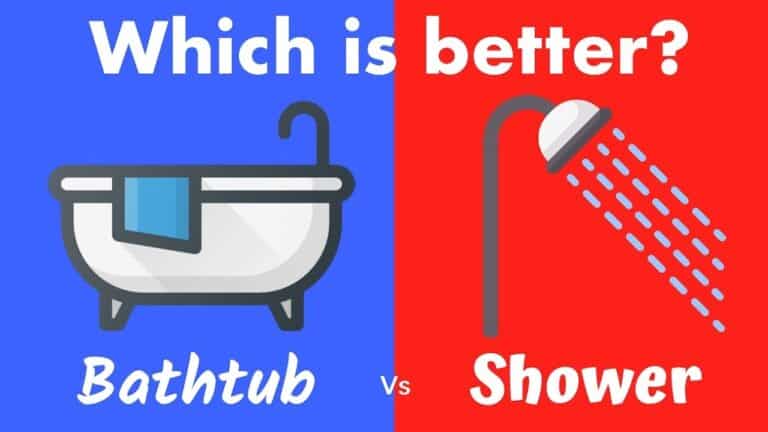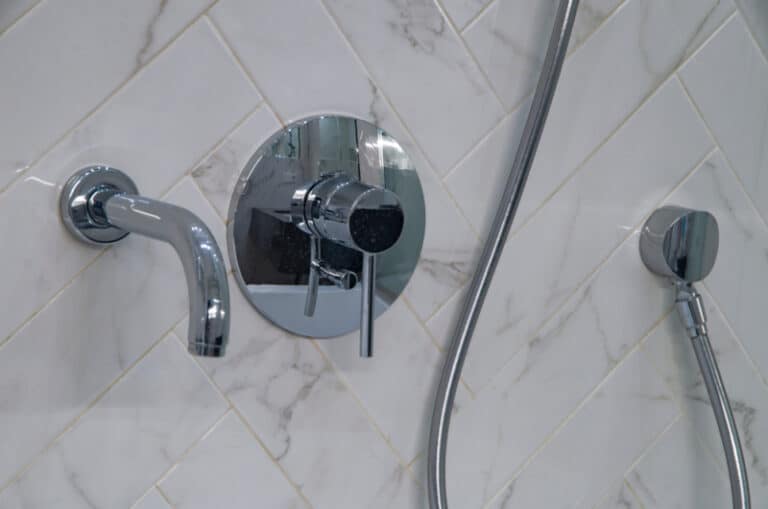Acrylic vs. Cast Iron Tub: Which One is Better?

For some, there is nothing that can compare to relaxing in a hot relaxing bath surrounded by fragrant bubbles. However, the type of bathtub you choose makes a significant difference. The first decision to consider when deciding on a new tub is which material was used to construct it – acrylic vs. cast iron tub.
Purchasing a bathtub is generally considered a long-term decision, similar to that buying a new mattress or bed. This, among others, is why this decision should be well-thought-out and should not be a place to skimp – especially if you are a bathtub soaking lover.
An Acrylic Bathtub is constructed of synthetic material
Acrylic bathtubs are built with sheets of heated colored plastic (which are polymers) stretched over a mold. Acrylic bathtubs are typically reinforced by the use of fiberglass. They tend to be popular as they are offered in various textures and colors. The material can be used to form built-in headrests and other purposes – offering details and benefits like water jets, steps, armrests, molded seats, cup holders, and underwater lighting, to name a few.
A Cast Iron Bathtub is a classic design that has been used since the 1880s
Cast Iron bathtubs are constructed using iron that is also poured into molds and allowed to cool. It is then fused with porcelain, ultimately covered by an enamel layer that helps to make cleaning easier and protect the finish of the bathtub. The final product is considered ageless in design.
Comparing Acrylic vs. Cast Iron Tub
When comparing these two types of popular bathtub options, consider how the benefits stack up –
| Acrylic Bathtubs | Cast Iron Bathtubs |
| Acrylic bathtubs are built to weigh as little as 50 lbs. Because the bathtub is lightweight (in terms of bathtubs), acrylic tubs are less costly to ship than cast iron alternatives. They are also easier to install. | Cast Iron bathtubs, which are usually built with 3/8” thick iron, are known for their durability. Because it can withstand decades of use – without being scratched or dinged, it is considered a purchase that can last generations. |
| Acrylic bathtubs, because of their lightweight construction, put less strain on the flooring and home/apartment structure. This is especially true when deciding to include a new tub on an upper level of a home. | Cast Iron bathtubs are currently built with up to 80% of recycled materials, which makes them eco-friendly alternatives. For those who wish to reuse a vintage cast iron bathtub, the materials would then be considered 100% recycled. |
| Acrylic bathtubs tend to be factory built on a mass production level. So they, therefore, are available in various sizes, shapes, and beneficial features. These types of tubs offer the most features. | Cast Iron bathtubs are a great choice when creating a unique bathroom design. They are also the preferred choice for bathrooms with high traffic or the tub will be the only tub available in the home. |
| Acrylic bathtubs are great options that offer ease of accessibility, especially for those individuals who are aging or live with a chronic condition or disability. Many acrylic tubs offer walk-in access and built-in safety handles. | Cast Iron bathtubs have interesting properties in that the tub remains cool to the touch before use. However, the heat generated by the incoming hot water easily and quickly transfers to the iron – creating a warm and lasting tub environment. |
| Acrylic bathtubs are warmer to the touch and much more relaxing to jump right into while the water fills up. | Cast Iron bathtubs remain hotter longer than baths in acrylic tubs. Essentially, this means a hot bath will stay hot enough for a long, luxurious soak. |
| For those consumers who have their hearts set on buying a tub that offers whirlpool or therapeutic features, Acrylic bathtubs offer the most for your money and the greatest number of features from which to choose. | Cast Iron bathtubs tend to be stain- and scratch-resistant. But by simply and gently cleaning the cast iron tub on a regular basis, it is simple to maintain its timeless look year after year. |
It is also important to compare each type of bathtub’s drawbacks –
| Acrylic Bathtubs | Cast Iron Bathtubs |
| Acrylic bathtubs are constructed to be strong but typically are only about 25” in thickness. As a result, acrylic bathtubs that are made of inexpensive flimsy materials can be prone to damage. | Cast Iron bathtubs, depending on the size and design, can weigh as much as 300 lbs. – even more when filled with water and the bather. [Water weighs over eight pounds per gallon!) |
| Acrylic bathtubs, if installed improperly, can develop problems like warping or cracking. As such, it is essential to have a professional install and maintain the tub according to manufacturer instructions. | If you have your heart set on cast iron, remember that some designs with aprons or claw feet will have a) a larger footprint and B) a larger water weight. Additionally, claw feet require the tub to focus its entire weight across four distinct points. |
| Acrylic bathtubs, when compared with cast iron bathtubs, do not have the capacity to insulate heat. This means that bath water cools more quickly in an acrylic bathtub, especially on a colder day. If you happen to prefer a shorter bath, or the bath is mostly used for bathing young children, this may be a non-issue. If your objective is to enjoy a long and luxurious bath, the acrylic tub may not be the preferred choice. | What floor will the Cast Iron tub be installed on? Cast Iron bathtubs, with their enormous and concentrated weight, require a professional to check the stability of the structure and the flooring beneath the tub -before installation. This extra step ensures the weight of the cast iron (and the water) will not cause property damage or an injury to a family member. |
| Acrylic bathtubs, simply by their natural properties, only provide limited durability. As a result, acrylic bathtubs will likely need to be replaced sooner than cast iron bathtubs. And, for some, it may matter that they are not considered an easily recycled material. | Unlike acrylic, cast iron bathtubs come in significantly fewer styles, shapes, and options. While there are newer cast iron bathtub designs that include modern stylized handles and jets, there are fewer options that are more costly than acrylic bathtubs. |
| These tubs are also prone to staining and scratching, so they must be gently cleaned. Avoid abrasive cleaners or chemicals. Do not use a rough, steel wool tool type of tool to clean. | The weight of a Cast Iron bathtub will be more expensive to ship and will need more than one person to install the bathtub. This needs to be considered in terms of costs. |
FAQs
Acrylic tubs are the far less expensive alternative when comparing the costs of new tub designs and options. Budget acrylic tubs can cost as little as several hundred dollars and are easily available in large home improvement stores. The more stylized, freestanding bathtubs, some with fancy jets and even built-in electronics, can reach beyond $1,000.
Cast Iron tubs are durable and quite sturdy, but with a higher price tag. The range of cast iron bathtub prices can start as low as $500, but with some nifty and convenient features, it is likely the cost can reach as high as several thousand dollars.
Additional Considerations
While you may be one of those individuals who love to soak in a cast iron tub, if you plan to move shortly after you purchase the tub, it would be financially imprudent to invest in an expensive tub that will only be used – by you, for a short time. Remember –
- The size of the tub will ultimately impact the amount of hot water you use. Larger tubs with more water will result in increased operating costs because there is more water to heat.
- Make sure the tub can make it to its location in your home – Measure hallways and doorways – especially the distance available if you need to round corners.
The Bottom-line
Acrylic and other molded plastic tubs are modern, lightweight, and versatile options. Conversely, Cast Iron bathtubs are classic and traditional and typically weigh as heavy as two grown men.
The type of bathtub that is best is highly dependent on how your specific scenario compares to the various factors noted above.
You can also read:






